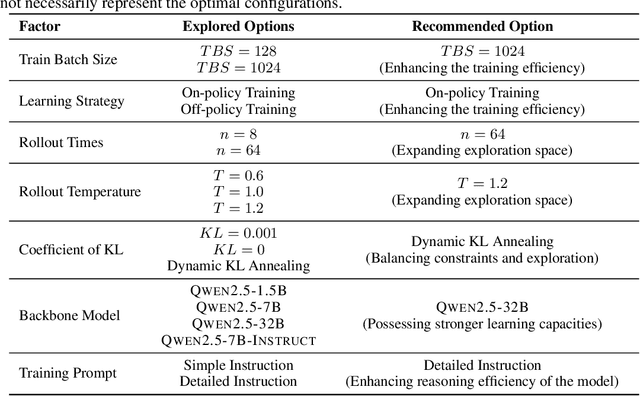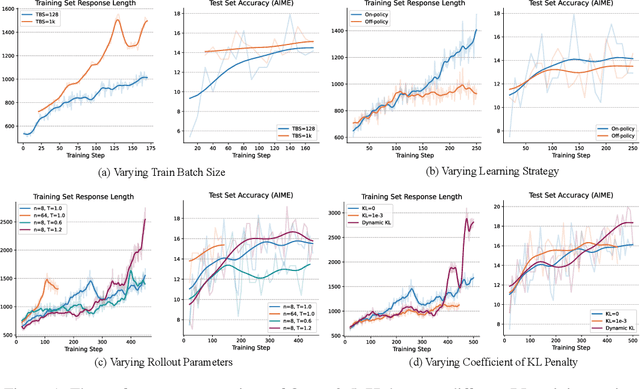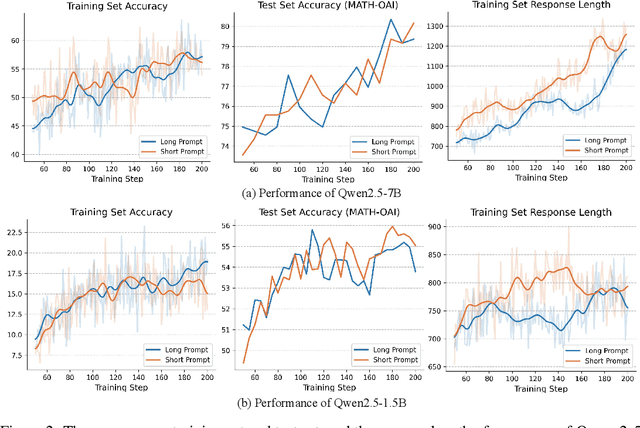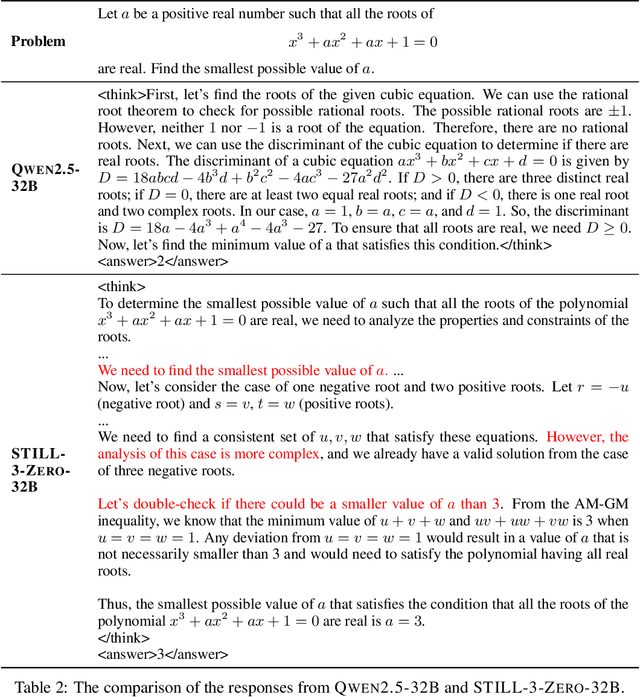Zhipeng Chen
HGMF: A Hierarchical Gaussian Mixture Framework for Scalable Tool Invocation within the Model Context Protocol
Aug 11, 2025Abstract:Invoking external tools enables Large Language Models (LLMs) to perform complex, real-world tasks, yet selecting the correct tool from large, hierarchically-structured libraries remains a significant challenge. The limited context windows of LLMs and noise from irrelevant options often lead to low selection accuracy and high computational costs. To address this, we propose the Hierarchical Gaussian Mixture Framework (HGMF), a probabilistic pruning method for scalable tool invocation. HGMF first maps the user query and all tool descriptions into a unified semantic space. The framework then operates in two stages: it clusters servers using a Gaussian Mixture Model (GMM) and filters them based on the query's likelihood. Subsequently, it applies the same GMM-based clustering and filtering to the tools associated with the selected servers. This hierarchical process produces a compact, high-relevance candidate set, simplifying the final selection task for the LLM. Experiments on a public dataset show that HGMF significantly improves tool selection accuracy while reducing inference latency, confirming the framework's scalability and effectiveness for large-scale tool libraries.
From Trial-and-Error to Improvement: A Systematic Analysis of LLM Exploration Mechanisms in RLVR
Aug 11, 2025Abstract:Reinforcement learning with verifiable rewards (RLVR) has emerged as a powerful paradigm for enhancing the reasoning capabilities of large language models (LLMs). Unlike traditional RL approaches, RLVR leverages rule-based feedback to guide LLMs in generating and refining complex reasoning chains -- a process critically dependent on effective exploration strategies. While prior work has demonstrated RLVR's empirical success, the fundamental mechanisms governing LLMs' exploration behaviors remain underexplored. This technical report presents a systematic investigation of exploration capacities in RLVR, covering four main aspects: (1) exploration space shaping, where we develop quantitative metrics to characterize LLMs' capability boundaries; (2) entropy-performance exchange, analyzed across training stages, individual instances, and token-level patterns; and (3) RL performance optimization, examining methods to effectively translate exploration gains into measurable improvements. By unifying previously identified insights with new empirical evidence, this work aims to provide a foundational framework for advancing RLVR systems.
ICPC-Eval: Probing the Frontiers of LLM Reasoning with Competitive Programming Contests
Jun 05, 2025Abstract:With the significant progress of large reasoning models in complex coding and reasoning tasks, existing benchmarks, like LiveCodeBench and CodeElo, are insufficient to evaluate the coding capabilities of large language models (LLMs) in real competition environments. Moreover, current evaluation metrics such as Pass@K fail to capture the reflective abilities of reasoning models. To address these challenges, we propose \textbf{ICPC-Eval}, a top-level competitive coding benchmark designed to probing the frontiers of LLM reasoning. ICPC-Eval includes 118 carefully curated problems from 11 recent ICPC contests held in various regions of the world, offering three key contributions: 1) A challenging realistic ICPC competition scenario, featuring a problem type and difficulty distribution consistent with actual contests. 2) A robust test case generation method and a corresponding local evaluation toolkit, enabling efficient and accurate local evaluation. 3) An effective test-time scaling evaluation metric, Refine@K, which allows iterative repair of solutions based on execution feedback. The results underscore the significant challenge in evaluating complex reasoning abilities: top-tier reasoning models like DeepSeek-R1 often rely on multi-turn code feedback to fully unlock their in-context reasoning potential when compared to non-reasoning counterparts. Furthermore, despite recent advancements in code generation, these models still lag behind top-performing human teams. We release the benchmark at: https://github.com/RUCAIBox/Slow_Thinking_with_LLMs
Towards Effective Code-Integrated Reasoning
May 30, 2025Abstract:In this paper, we investigate code-integrated reasoning, where models generate code when necessary and integrate feedback by executing it through a code interpreter. To acquire this capability, models must learn when and how to use external code tools effectively, which is supported by tool-augmented reinforcement learning (RL) through interactive learning. Despite its benefits, tool-augmented RL can still suffer from potential instability in the learning dynamics. In light of this challenge, we present a systematic approach to improving the training effectiveness and stability of tool-augmented RL for code-integrated reasoning. Specifically, we develop enhanced training strategies that balance exploration and stability, progressively building tool-use capabilities while improving reasoning performance. Through extensive experiments on five mainstream mathematical reasoning benchmarks, our model demonstrates significant performance improvements over multiple competitive baselines. Furthermore, we conduct an in-depth analysis of the mechanism and effect of code-integrated reasoning, revealing several key insights, such as the extension of model's capability boundaries and the simultaneous improvement of reasoning efficiency through code integration. All data and code for reproducing this work are available at: https://github.com/RUCAIBox/CIR.
R1-Searcher++: Incentivizing the Dynamic Knowledge Acquisition of LLMs via Reinforcement Learning
May 22, 2025Abstract:Large Language Models (LLMs) are powerful but prone to hallucinations due to static knowledge. Retrieval-Augmented Generation (RAG) helps by injecting external information, but current methods often are costly, generalize poorly, or ignore the internal knowledge of the model. In this paper, we introduce R1-Searcher++, a novel framework designed to train LLMs to adaptively leverage both internal and external knowledge sources. R1-Searcher++ employs a two-stage training strategy: an initial SFT Cold-start phase for preliminary format learning, followed by RL for Dynamic Knowledge Acquisition. The RL stage uses outcome-supervision to encourage exploration, incorporates a reward mechanism for internal knowledge utilization, and integrates a memorization mechanism to continuously assimilate retrieved information, thereby enriching the model's internal knowledge. By leveraging internal knowledge and external search engine, the model continuously improves its capabilities, enabling efficient retrieval-augmented reasoning. Our experiments demonstrate that R1-Searcher++ outperforms previous RAG and reasoning methods and achieves efficient retrieval. The code is available at https://github.com/RUCAIBox/R1-Searcher-plus.
Seed1.5-VL Technical Report
May 11, 2025Abstract:We present Seed1.5-VL, a vision-language foundation model designed to advance general-purpose multimodal understanding and reasoning. Seed1.5-VL is composed with a 532M-parameter vision encoder and a Mixture-of-Experts (MoE) LLM of 20B active parameters. Despite its relatively compact architecture, it delivers strong performance across a wide spectrum of public VLM benchmarks and internal evaluation suites, achieving the state-of-the-art performance on 38 out of 60 public benchmarks. Moreover, in agent-centric tasks such as GUI control and gameplay, Seed1.5-VL outperforms leading multimodal systems, including OpenAI CUA and Claude 3.7. Beyond visual and video understanding, it also demonstrates strong reasoning abilities, making it particularly effective for multimodal reasoning challenges such as visual puzzles. We believe these capabilities will empower broader applications across diverse tasks. In this report, we mainly provide a comprehensive review of our experiences in building Seed1.5-VL across model design, data construction, and training at various stages, hoping that this report can inspire further research. Seed1.5-VL is now accessible at https://www.volcengine.com/ (Volcano Engine Model ID: doubao-1-5-thinking-vision-pro-250428)
Challenging the Boundaries of Reasoning: An Olympiad-Level Math Benchmark for Large Language Models
Mar 27, 2025



Abstract:In recent years, the rapid development of large reasoning models has resulted in the saturation of existing benchmarks for evaluating mathematical reasoning, highlighting the urgent need for more challenging and rigorous evaluation frameworks. To address this gap, we introduce OlymMATH, a novel Olympiad-level mathematical benchmark, designed to rigorously test the complex reasoning capabilities of LLMs. OlymMATH features 200 meticulously curated problems, each manually verified and available in parallel English and Chinese versions. The problems are systematically organized into two distinct difficulty tiers: (1) AIME-level problems (easy) that establish a baseline for mathematical reasoning assessment, and (2) significantly more challenging problems (hard) designed to push the boundaries of current state-of-the-art models. In our benchmark, these problems span four core mathematical fields, each including a verifiable numerical solution to enable objective, rule-based evaluation. Empirical results underscore the significant challenge presented by OlymMATH, with state-of-the-art models including DeepSeek-R1 and OpenAI's o3-mini demonstrating notably limited accuracy on the hard subset. Furthermore, the benchmark facilitates comprehensive bilingual assessment of mathematical reasoning abilities-a critical dimension that remains largely unaddressed in mainstream mathematical reasoning benchmarks. We release the OlymMATH benchmark at the STILL project: https://github.com/RUCAIBox/Slow_Thinking_with_LLMs.
R1-Searcher: Incentivizing the Search Capability in LLMs via Reinforcement Learning
Mar 07, 2025



Abstract:Existing Large Reasoning Models (LRMs) have shown the potential of reinforcement learning (RL) to enhance the complex reasoning capabilities of Large Language Models~(LLMs). While they achieve remarkable performance on challenging tasks such as mathematics and coding, they often rely on their internal knowledge to solve problems, which can be inadequate for time-sensitive or knowledge-intensive questions, leading to inaccuracies and hallucinations. To address this, we propose \textbf{R1-Searcher}, a novel two-stage outcome-based RL approach designed to enhance the search capabilities of LLMs. This method allows LLMs to autonomously invoke external search systems to access additional knowledge during the reasoning process. Our framework relies exclusively on RL, without requiring process rewards or distillation for a cold start. % effectively generalizing to out-of-domain datasets and supporting both Base and Instruct models. Our experiments demonstrate that our method significantly outperforms previous strong RAG methods, even when compared to the closed-source GPT-4o-mini.
An Empirical Study on Eliciting and Improving R1-like Reasoning Models
Mar 06, 2025



Abstract:In this report, we present the third technical report on the development of slow-thinking models as part of the STILL project. As the technical pathway becomes clearer, scaling RL training has become a central technique for implementing such reasoning models. We systematically experiment with and document the effects of various factors influencing RL training, conducting experiments on both base models and fine-tuned models. Specifically, we demonstrate that our RL training approach consistently improves the Qwen2.5-32B base models, enhancing both response length and test accuracy. Furthermore, we show that even when a model like DeepSeek-R1-Distill-Qwen-1.5B has already achieved a high performance level, it can be further refined through RL training, reaching an accuracy of 39.33% on AIME 2024. Beyond RL training, we also explore the use of tool manipulation, finding that it significantly boosts the reasoning performance of large reasoning models. This approach achieves a remarkable accuracy of 86.67% with greedy search on AIME 2024, underscoring its effectiveness in enhancing model capabilities. We release our resources at the STILL project website: https://github.com/RUCAIBox/Slow_Thinking_with_LLMs.
VersaGen: Unleashing Versatile Visual Control for Text-to-Image Synthesis
Dec 17, 2024



Abstract:Despite the rapid advancements in text-to-image (T2I) synthesis, enabling precise visual control remains a significant challenge. Existing works attempted to incorporate multi-facet controls (text and sketch), aiming to enhance the creative control over generated images. However, our pilot study reveals that the expressive power of humans far surpasses the capabilities of current methods. Users desire a more versatile approach that can accommodate their diverse creative intents, ranging from controlling individual subjects to manipulating the entire scene composition. We present VersaGen, a generative AI agent that enables versatile visual control in T2I synthesis. VersaGen admits four types of visual controls: i) single visual subject; ii) multiple visual subjects; iii) scene background; iv) any combination of the three above or merely no control at all. We train an adaptor upon a frozen T2I model to accommodate the visual information into the text-dominated diffusion process. We introduce three optimization strategies during the inference phase of VersaGen to improve generation results and enhance user experience. Comprehensive experiments on COCO and Sketchy validate the effectiveness and flexibility of VersaGen, as evidenced by both qualitative and quantitative results.
 Add to Chrome
Add to Chrome Add to Firefox
Add to Firefox Add to Edge
Add to Edge